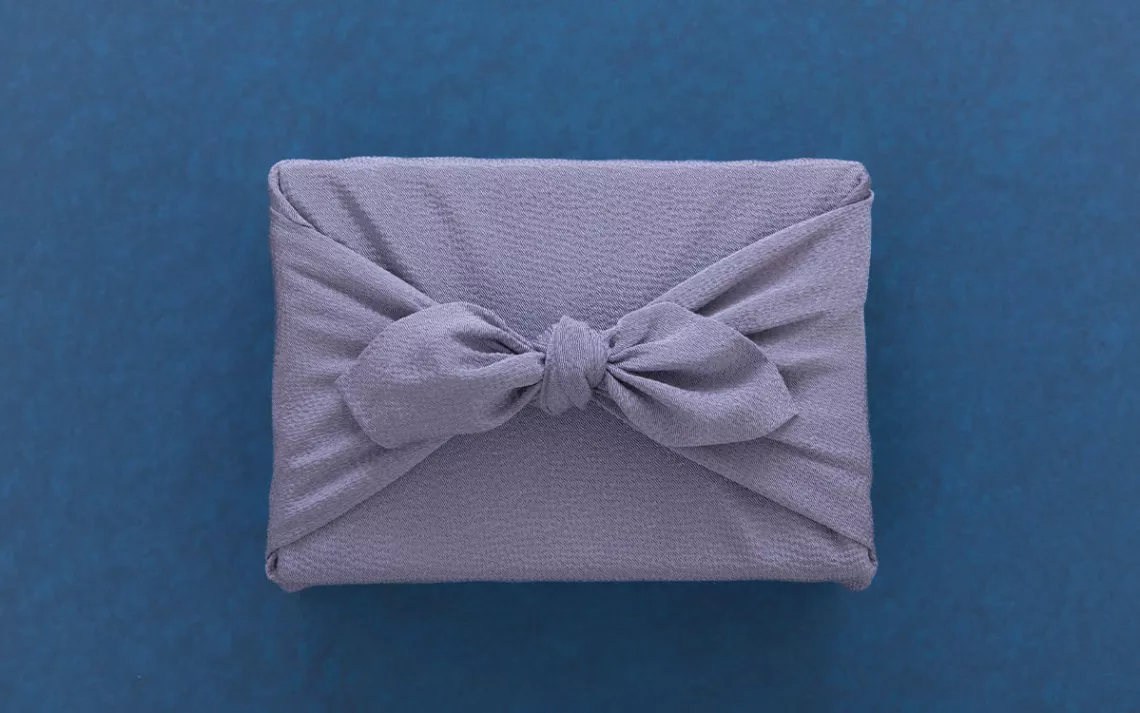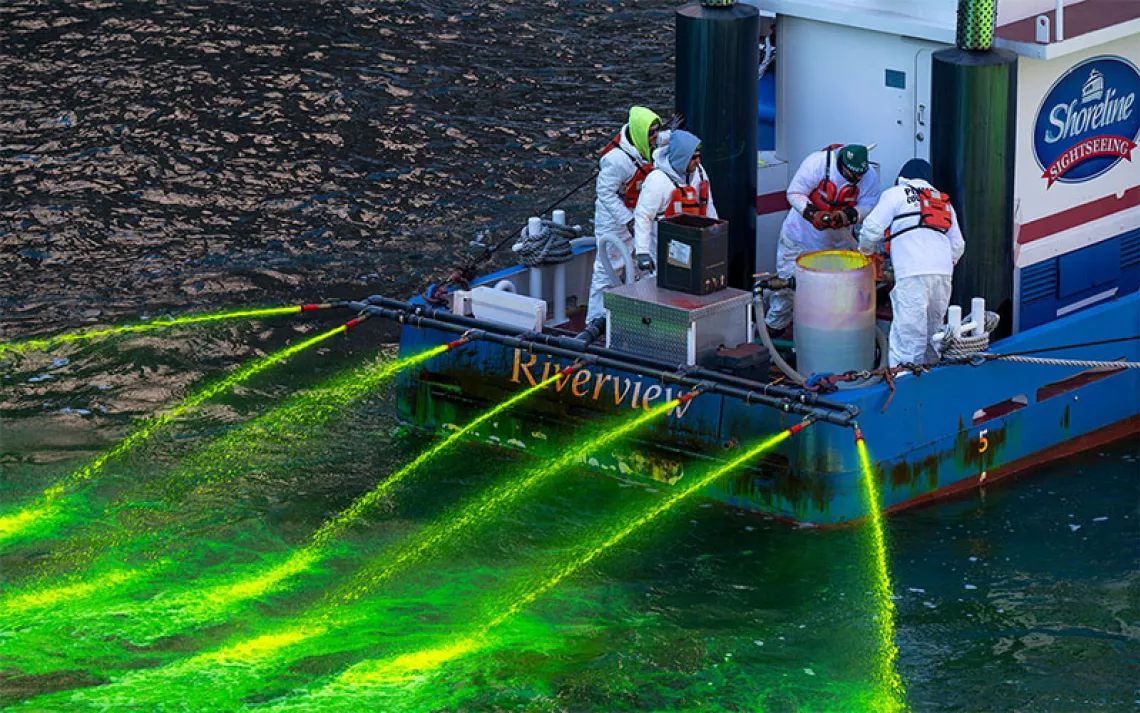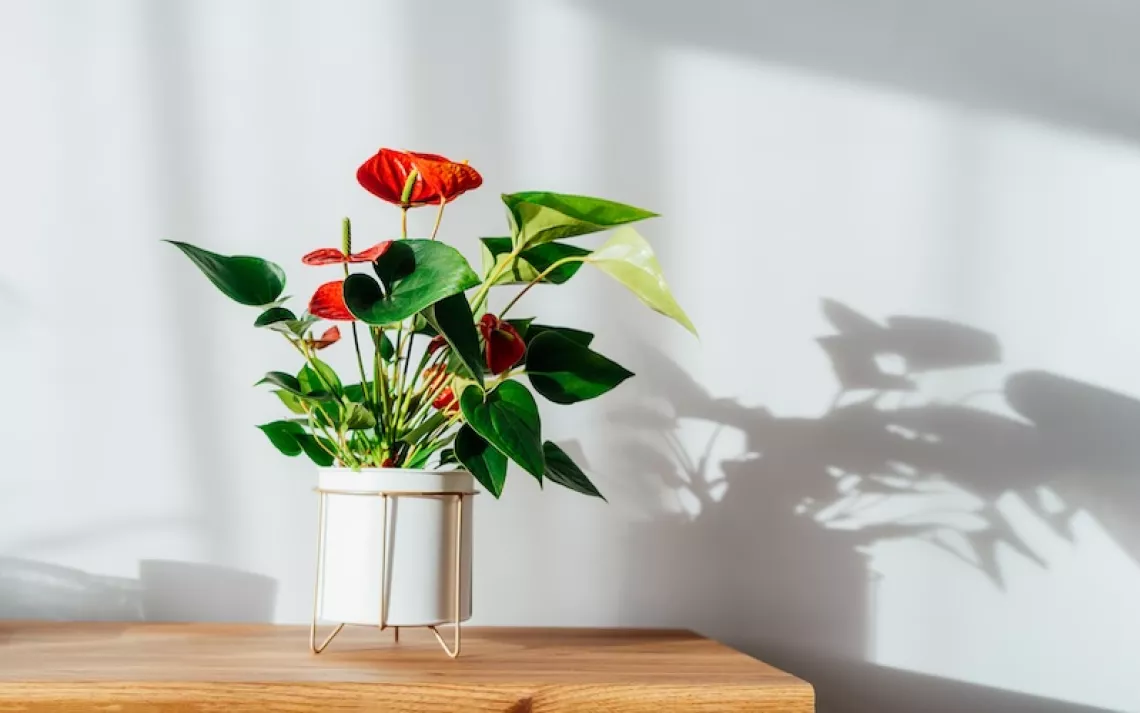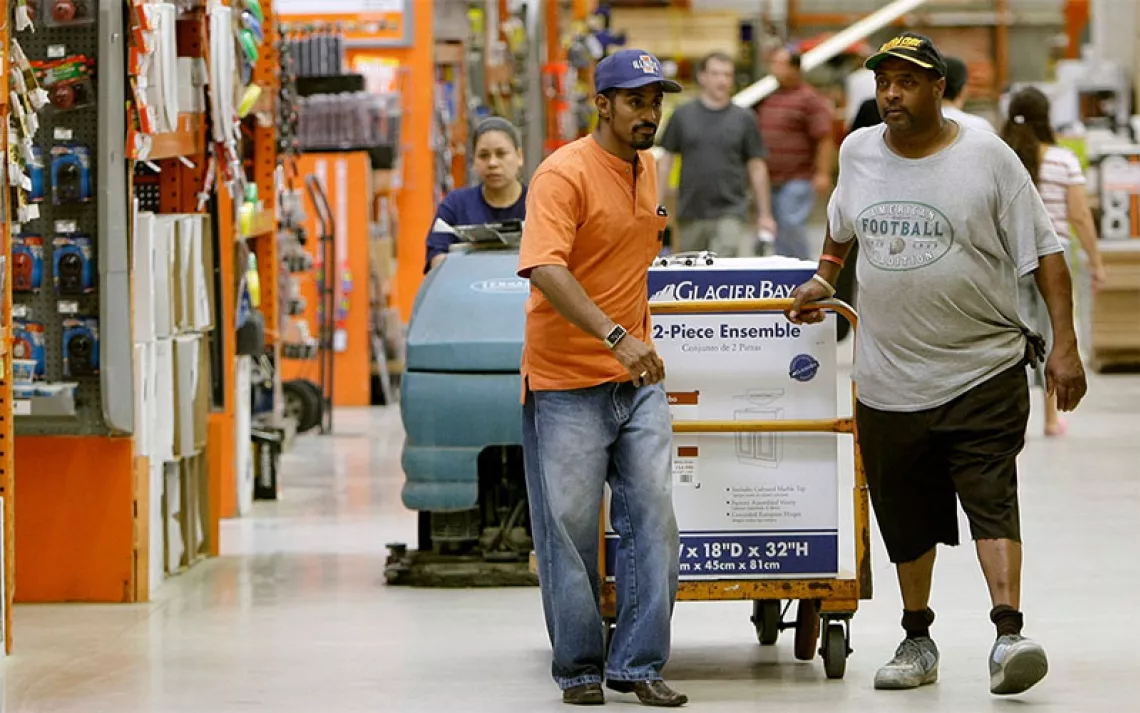How to Give Gifts Without the Waste of Wrapping Paper
Millions of pounds of gift wrapping end up in landfills. A 1,300-year-old Japanese tradition offers another way.

Photo by karinsasaki/iStock
The first Chanukah of the pandemic was different, but not for the reasons you might assume. It’s true, I didn’t fill my tiny apartment with guests eagerly awaiting their first crunch of latkes; and I did light a menorah over Zoom, joining an agonizingly out-of-sync prayer. But what was truly memorable about Chanukah 2020 is that it was the year I stopped using wrapping paper.
Gift-wrapping traditions in the United States are a waste-producing nightmare. As of 2017, Americans spent $12.7 billion on just the colorful paper; later, millions of pounds of it ended up in landfills. Wrapping paper is made of a mix of different paper types, glitter (also a microplastic, if you’re counting the ills), and bright dyes, all of which make it unfit for industrial recycling systems. What’s worse, because it’s called wrapping paper, many people attempt to do the right thing by adding it to their recycling bin, inadvertently contaminating the whole batch and landing everything, even the genuinely recyclable objects sitting in the bin, in a landfill. What exactly are we celebrating this time of year, again?
I started thinking about the absurdity of this all during a trip to Japan mere weeks before the pandemic broke out. There, browsing a Tokyo shop with neatly lined shelves full of charming artisan products, I hesitated over a stack of brightly colored and intricately patterned cloths. They came in a variety of sizes and orientations—some like square dinner napkins, others like rectangular hand towels—but I couldn’t figure out what they were for. I must have looked like the befuddled foreigner I truly was because a shop clerk stopped by, pointing at the colorful rows with an upturned hand, and asked, “Do you know furoshiki?” I shook my head. “For wrapping,” she said, nodding with a smile and walking away.
I didn’t totally understand, but I purchased a hand-painted light-blue square. It depicts a humpback whale mid-dive with a wry look in its large eye. I didn’t know it at the time, but easily finding stacks of these cloths for sale in one of Tokyo’s most famous shopping districts wouldn’t have been possible without the environmental movement.
In Japan, the practice of wrapping special objects in decorated cloths dates back to the eighth century, but the tradition almost disappeared. Furoshiki originated as a way to protect precious religious items in a temple, morphed into a method of carrying belongings in a bathhouse, and then sharply declined after World War II when societies around the globe began turning to single-use paper and plastic. It wasn’t until 2006 that furoshiki reemerged under new marketing. Japan’s then minister of the environment, Yuriko Koike, introduced a campaign called Mottainai Furoshiki, urging citizens to return to old traditions through an eco-friendly lens.
“The Japanese word Mottainai means it’s a shame for something to go to waste without having made use of its potential in full,” she told a meeting of senior officials that year, showcasing a special furoshiki cloth made of recycled plastic bottles and featuring birds and flowers originally drawn by artist Ito Jakuchu in the 1700s. A blending of old and new. Today, many Japanese people use these cloths—which can be folded and tied in clever ways to secure objects and create handles—to carry everyday items, such as bento boxes containing lunch. And they also use them to wrap gifts. The cloths themselves then become part of the gift—you give one away and get a different one in return. Making use of full potential, as it were.
You don’t need to buy anything new to take up a similar practice, nor do you need to take an emissions-heavy plane ride across the world (note to self). There’s a lot of room for inspiration here. In my family, we make use of everyday textiles we already own, such as clean towels, cloth napkins, scarves, and bedding—the enclosed nature of a pillowcase feels ready-made for enveloping a gift, as it would a pillow. Sometimes we double wrap since you can often see through a single layer. We secure the cloth with pins, or sometimes reuse ribbons from previous years. (Again, full potential. Don’t pick up furoshiki just to throw away the gift wrapping you do still have.)
While replacing the wrapping paper itself is the biggest opportunity for waste reduction, furoshiki and its inspired approaches also eschew tape, ribbons, gift bags, adhesive bows, and tissue paper (also not recyclable and not really “paper,” in that sense)—all gift-giving accoutrements that also end up in landfills along with the wrapping. In the United States, we produce 25 percent more waste between Thanksgiving and New Year’s Eve than we do the entire rest of the year—one trillion extra tons of waste, to be precise. Some of that is food and decorations, but it’s also gift wrapping.
Personal change won’t avert the most catastrophic outcomes of climate change, nor are individual choices primarily to blame for our current climate crisis—both of these fall to governments and large corporations. But acknowledging the need for systems change doesn’t render individual change pointless, especially when something like gift wrapping is such a low-hanging fruit at such a massive scale. While switching a meat-heavy diet to a more planet-friendly vegan one may require overcoming emotions, cultural frameworks, and health and nutrition concerns, by comparison simply wrapping gifts in sheets instead of trash-to-be seems like … why not? And furoshiki even has one strong advantage: If you’ve ever tried concealing an awkwardly shaped gift with stiff wrapping paper, then you can imagine how much easier that would’ve been with cloth.
Where my family’s tradition differs from its Japanese origins is that we do ask for our cloths back since they weren’t specially purchased for giving gifts. Asking for the wrapping back that first Chanukah did feel a little clunky, or somehow rude. But now I delight not only in the revealed gifts but also at the cleverness and beauty of what household textiles we scrounge up each year to contain them. After we open gifts, the resulting pile of cloths is like an interior decor melting pot of all the homes I feel safe and loved in, no matter where the gift exchange actually takes place.
What I love most about furoshiki is how easily the message of returning to this 700s-era tradition transfers to other kinds of environmentally minded personal change: These behavioral shifts feel radical or disorienting to adjust to at first only because I’ve never lived in a world without single-use paper and plastic at its center. But at the scale of human history, my way of life is the outlier. Over the past 15 years, I’ve found myself incredulously thinking some version of: How on earth can I clean my skin without plastic bottles of liquid soap? What do I do with my ripped clothes? Is there any way to clean up a mess without paper towels?
Bar soap. Mending. Rags from what can’t be mended. None of these are innovations; they’re all from the past. Viewed this way, making such changes in my lifetime begins to feel less like a burden and more like returning home after a long journey away. Gift wrapping is just one stop on the way back.
 The Magazine of The Sierra Club
The Magazine of The Sierra Club







